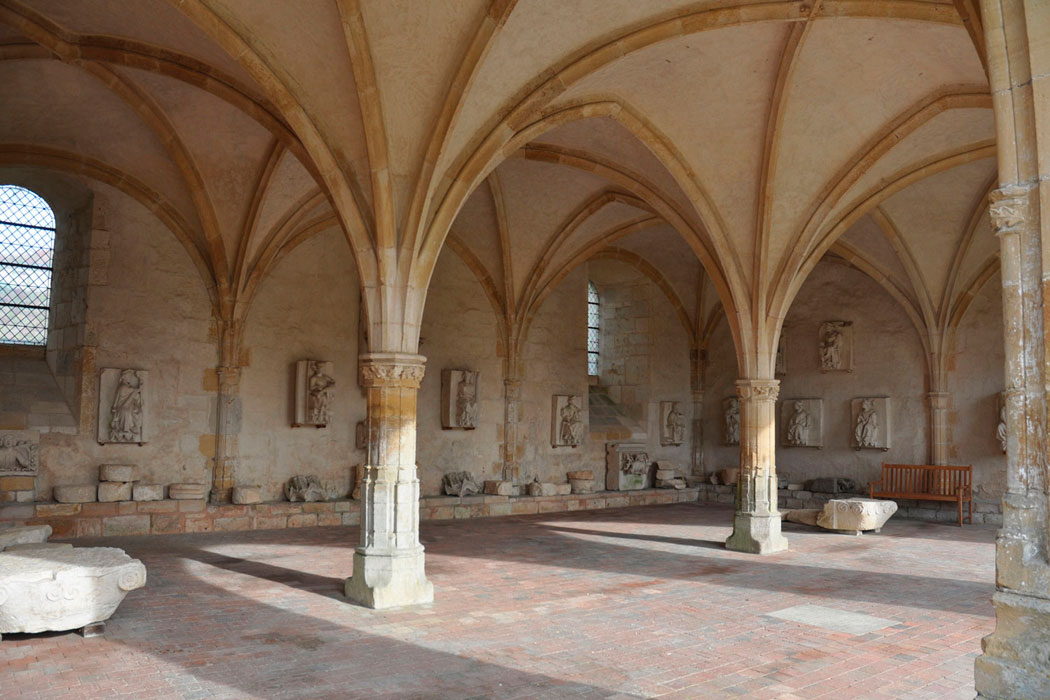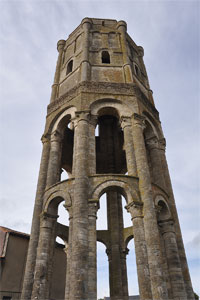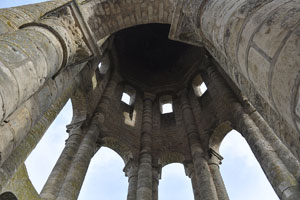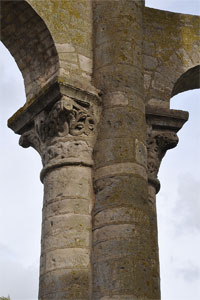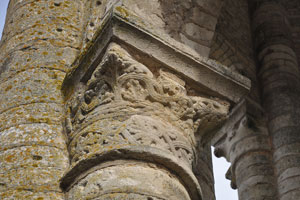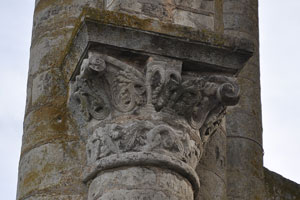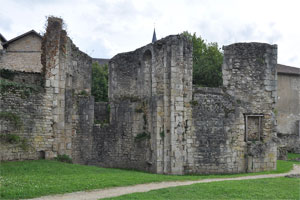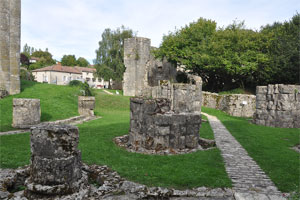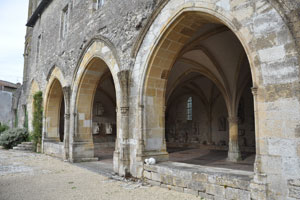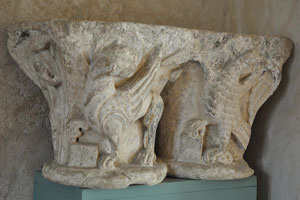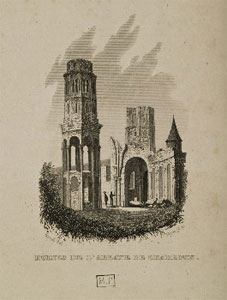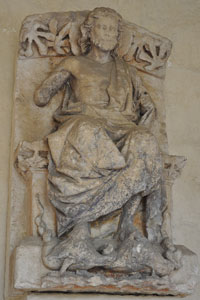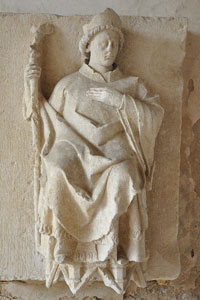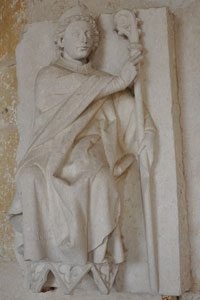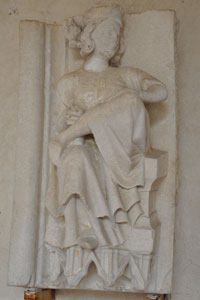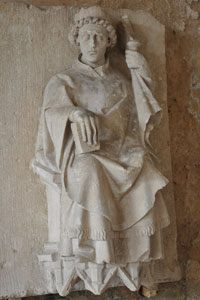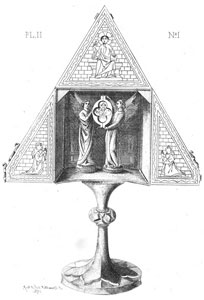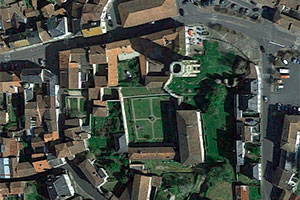The Benedictine abbey of Saint-Sauveur de Charroux was founded and endowed with land and property in 785 by Count Roger of Limoges and his wife Euphrasie, with the support of King Charlemagne. It is possible that the act of 785 refers to the endowment, and that the original foundation took place as early as 769. In its early years, it was one of the monasteries most favoured by the monarchy, and it accumulated a remarkable treasure in the form of relics, some of which were contributed by kings themselves.
The presence of these precious relics made the abbey an important centre of devotion that attracted many pilgrims and helped its economy flourish. According to tradition, one of the most revered relics was known as the Saint-Vœu, said to have been given by an angel to Charlemagne—although other accounts claim he had offered it to the pope, and that it was preserved in Rome. A fragment of the True Cross was also venerated. Charlemagne confirmed Count Roger’s donations and declared the abbey exempt from episcopal authority. Pope Leo III confirmed this in 801, placing the abbey under his direct jurisdiction.
Other rulers, such as Louis the Pious (815), Lothair (830), and Charles the Bald (872 and 874), as well as several popes, also acted in favour of the monastery. It is believed that, in 938, monks from this abbey who had taken refuge in Auvergne restored the abbey of Saint-Austremoine d’Issoire (Puy-de-Dôme). In the 10th century, the monastery suffered two fires; as a result of the second, between 1017 and 1028, a new church was built. Pope Urban II visited the abbey in 1096 and granted a bull confirming all its possessions. In the 12th century, additional donations and bulls were received, a pattern that continued in the following centuries.
The Hundred Years’ War gravely affected the monastery’s prosperity, and it was burned down in 1422. The last regular abbot was Geoffroy de Cluys, the first commendatory abbot was appointed in 1521. In the 16th century, the abbey entered a period of decline that worsened during the Wars of Religion: in 1568, the town of Charroux and the abbey itself were attacked and plundered, left in ruins. The community never fully recovered and lingered in a precarious state until 1762, when it was united with the chapter of the collegiate church of Brioude (Auvergne).
In 1793, following the Revolution, the site was sold and passed into private hands. This led to the destruction of many of the surviving buildings, including the church—a singular structure with a cruciform plan centred on a large circular building, a rotunda inspired by the Holy Sepulchre of Jerusalem. Today, only the central part of this rotunda survives. The construction of the church took place in several stages during the 11th century.
One of the few remaining buildings is the 15th-century chapter house, which preserves sculpted elements from the Gothic portal, now largely dismantled, although some structures remain in situ, integrated into later constructions. In 1856, when a congregation of Ursuline nuns occupied part of the site, a hiding place was discovered in a cloister wall containing ancient reliquaries once venerated in the rotunda of the monastic church, likely hidden during the Wars of Religion.
- ANÒNIM (1898). Charroux. Son abbaye, ses reliquaires. Paris / Poitiers: H. Oudin
- BAUDRILLART, Alfred (1953). Dictionnaire d'histoire et de géographie ecclésiastiques. Vol. 12. París: Letouzey et Ané
- BEAUNIER, Dom (1910). Abbayes et prieurés de l'ancienne France. Vol. 3: Auch, Bordeaux. Abbaye de Ligugé
- BROTHIER, Anne-Marie; i altres (s.d.). Abbaye de Charroux. Charroux: Amis de Pays Charlois
- BROUILLET, Amédée (1856). Description des Reliquaires trouvés dans l'ancienne abbaye de Charroux, le 9 Août 1856. Poitiers: Dupré
- CLÉMENT, François; i altres (1818). L'art de vérifier les dates des faits historiques, vol. 10. París: Valade
- MONSABERT, Pierre (1910). Chartes et documents pour servir à l'histoire de l'abbaye de Charroux. Société des archives historiques du Poitou, vol. XXXIX
- SAINT-MAUR, Congregació de (1720). Gallia Christiana in provincias ecclesiasticas distributa. Vol. 2. París: Typographia Regia
- SERBAT, Louis (1913). Charroux. Congrès archéologique de France, 1912. Paris / Caen: Picard / Delesques
